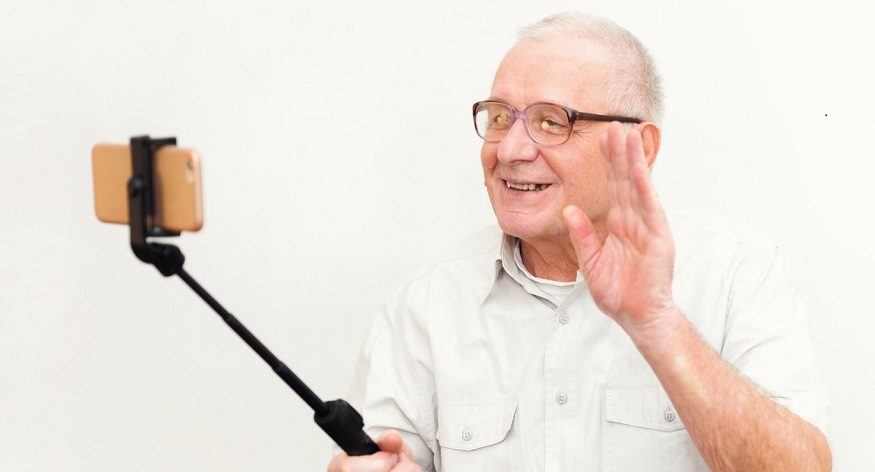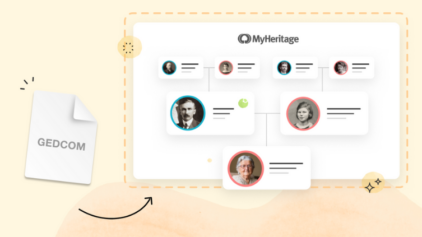Thank you. Wondering if you have a list of potential questions to ask our mom in our video we hope to start soon?


Interviewing older relatives is an essential part of genealogical research. They can provide such a wealth of information that you will never find anywhere else. But what do you do if you can’t visit your relative in person?
Fortunately, we live in an increasingly connected world, and with a little help from technology and a touch of creativity, you can still get all the information you need.
Over the phone
The biggest advantage of using the phone is that unlike with newer forms of technology, most elderly people have access to a phone, know how to operate it perfectly well, and probably use it on a regular basis.
The disadvantage is that there is no visual component to a phone conversation. That means that you can’t show them photographs or documents or ask questions about those things, and they can’t show anything to you, either. This may also prove a challenge if your family member is hard of hearing.
One way around the first issue is to exchange visual information ahead of the phone interview, either by sending photocopies in the mail or by using any digital technologies they may be comfortable with.
Some tips for making the most out of your phone interview:
- Make the call from a quiet room where you won’t be distracted.
- Have everything you need right in front of you before making the call. Set yourself up at a desk with a computer and/or paper and writing utensils, a glass of water, and any photographs or documents you might want to consult during the conversation.
- Print out our list of interview questions or prepare your own.
- Set up the interview at a time when your relative will be alert and well-rested, and listen for long pauses or tiredness in their voice — anything that can indicate that it may be time to wrap up and take a rest. You can always call back another time.
Video chat
Video chat is as close as you can get to being in the same room with your relative. The biggest challenge is making sure your relative is technically able to participate, because many older people struggle to use video chat technology.
If your relative doesn’t have a device with a camera, consider purchasing one for them and having someone you know who lives nearby install it and/or show your relative how to use it. Keep in mind that your relative still may not be able to operate it on their own, and you may require the help of someone on the other end when using the device.
Which device should you purchase for your relative? That depends on how tech-savvy they are. If your relative has a very hard time with digital devices, there are special devices developed specifically for people like them, such as the ViewClix Smart Frame (a picture frame that can receive video calls from any device with the ViewClix app installed) or the GrandPad (a simple tablet designed for seniors).
Some tips for making the most of your video chat interview:
- Set up your webcam or device in a well-lit, quiet room where you won’t be disturbed. Do a test run with your camera first to find the best spot and angle in the room — one where you’re not backlit and your relative will be able to see your face clearly.
- Make sure you have a high-quality microphone, especially if your relative is hard of hearing. Keep in mind that audio output of digital devices is lower-quality than that of landlines. Be patient if your relative has trouble hearing you — and consider calling on the phone in addition to the video chat for better sound quality.
- As mentioned, if your relative struggles with technology, it’s a good idea to have a more tech-savvy individual with them during the interview to help with any technical issues they may encounter.
- If you wish to show your relative photos or documents you have, make sure to hold them still to give as clear a visual as possible. Another option is to send a digital copy over chat, but they might not know how to view it.
Mail and email correspondence
In lieu of the possibility of a live interview, there is always the old-fashioned option: an interview in writing.
There are a few advantages to an interview in writing: it gives your relative time to think out their answers, and it gives you a concrete record of the information they convey to you. It’s also a more practical solution for interviewing relatives who are hard of hearing.
Some older relatives may be comfortable typing out their answers and sending it over email, while some might prefer to send it in the mail. If your relative doesn’t feel up to typing or writing out the answers to your questions, an in-between option is to have them record themselves and send you the recording. They can use a simple digital recording device, such as an MP3 player, or an old tape recorder, which you can digitize later. If there is someone nearby who can help set them up with a video camera — even better.
Some tips for getting the most out of a mailed or emailed correspondence:
- Limit your initial letter to no more than 10 questions. More than that may overwhelm your relative. You can always write back with more questions later.
- Be sure to provide your relative with all your contact information. You may even consider sending along a self-addressed, stamped envelope to make it easier for them to send their reply.
- Include copies of photographs or other documents in your initial letter to help jog your relative’s memory.
Good luck!











Georgina Frogley
July 10, 2020
Excellent!